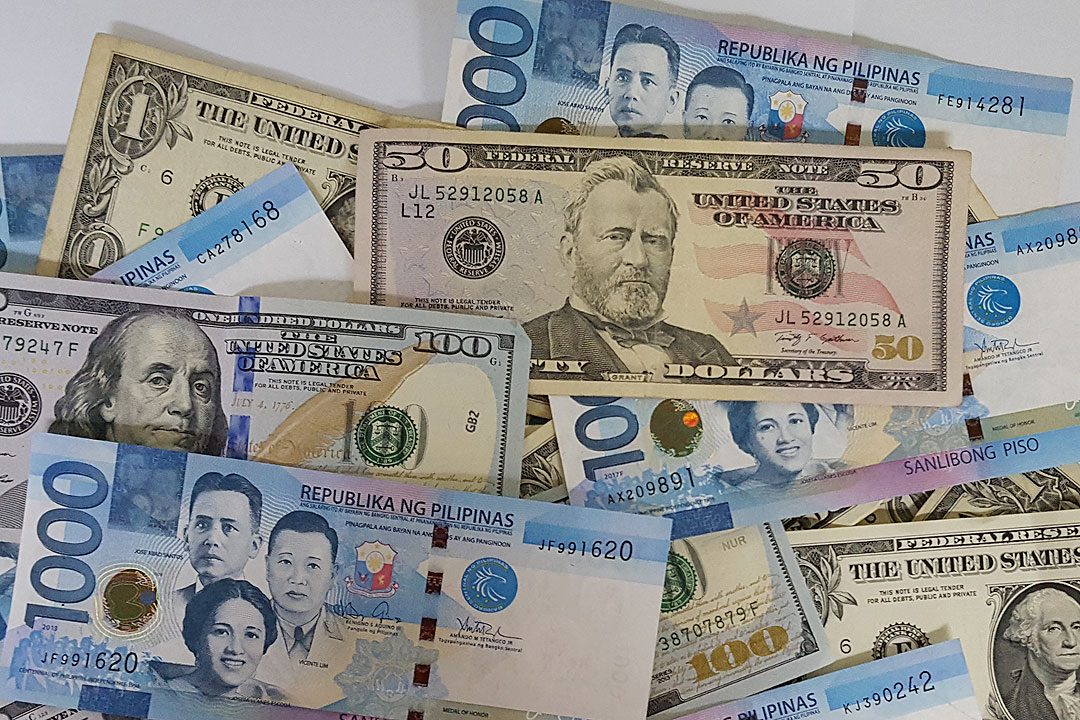Peso may remain under pressure amid worsening conflict in the Middle East

THE PESO may remain at the P57 level against the dollar this week due to worsening geopolitical concerns after the United States struck Iran’s nuclear sites to join the ongoing conflict in the Middle East.
On Friday, the local unit halted its eight-day losing streak as it closed at P57.17 per dollar, rebounding by 28 centavos from its near three-month low finish of P57.45 on Thursday, Bankers Association of the Philippines data showed.
Week on week, however, the peso dropped by 96 centavos from its P56.21 close on June 13.
“The peso’s recovery today was driven by a softer dollar, improved global risk sentiment, and a technical correction after recent weakness. Easing US inflation data and expectations of a less aggressive US Federal Reserve supported emerging market currencies, including the peso,” Philippine Institute for Development Studies Senior Research Fellow John Paolo R. Rivera said in a Viber message on Friday.
The local unit climbed as Bangko Sentral ng Pilipinas (BSP) Governor Eli M. Remolona, Jr. said the central bank will intervene in the foreign exchange market more strongly if the peso’s weakness threatens inflation, Rizal Commercial Banking Corp. Chief Economist Michal L. Ricafort said in a Viber message.
The dollar was also generally weaker early on Friday on hopes that the US would not join the conflict between Iran and Israel, Mr. Ricafort said. However, on Saturday, the US attacked Iran.
For this week, Mr. Rivera said the market will monitor US economic data and global oil prices to drive peso-dollar trading, adding that geopolitical shocks could cause the local unit to weaken.
Mr. Rivera sees the peso moving between P57 and P57.50 per dollar this week, while Mr. Ricafort said it could range from P56.90 to P57.40.
A US attack on Iranian nuclear sites could lead to a knee-jerk reaction in global markets when they reopen, sending oil prices higher and triggering a rush to safety, investors said, as they assessed how the latest escalation of tensions would ripple through the global economy, Reuters reported.
The attack, which was announced by President Donald J. Trump on social media site Truth Social, deepens US involvement in the Middle East conflict. That was the question going into the weekend, when investors were mulling a host of different market scenarios.
In the immediate aftermath of the announcement, they expected the US involvement was likely to cause a sell-off in equities and a possible bid for the dollar and other safe-haven assets when trading begins, but also said much uncertainty about the course of the conflict remained.
Mr. Trump called the attack “a spectacular military success” in a televised address to the nation and said Iran’s “key nuclear enrichment facilities have been completely and totally obliterated.” He said the US military could go after other targets in Iran if the country did not agree to peace.
A key concern for markets would center around the potential impact of the developments in the Middle East on oil prices and thus on inflation. A rise in inflation could dampen consumer confidence and lessen the chance of near-term interest rate cuts.
While global benchmark Brent crude futures have risen as much as 18% since June 10, hitting a near five-month high of $79.04 on Thursday, the S&P 500 has been little changed, following an initial drop when Israel launched its attacks on Iran on June 13.
Before the US attack on Saturday, analysts at Oxford Economics modeled three scenarios, including a de-escalation of the conflict, a complete shutdown in Iranian oil production and a closure of the Strait of Hormuz, “each with increasingly large impacts on global oil prices.”
In the most severe case, global oil prices jump to around $130 per barrel, driving US inflation near 6% by the end of this year, Oxford said in the note.
Economists warn that a dramatic rise in oil prices could damage a global economy already strained by Mr. Trump’s tariffs.
An escalation in the conflict could have mixed implications for the US dollar, which has tumbled this year amid worries over diminished US exceptionalism.
In the event of US direct engagement in the Iran-Israel war, the dollar could initially benefit from a safety bid, analysts said. — Aaron Michael C. Sy with Reuters



